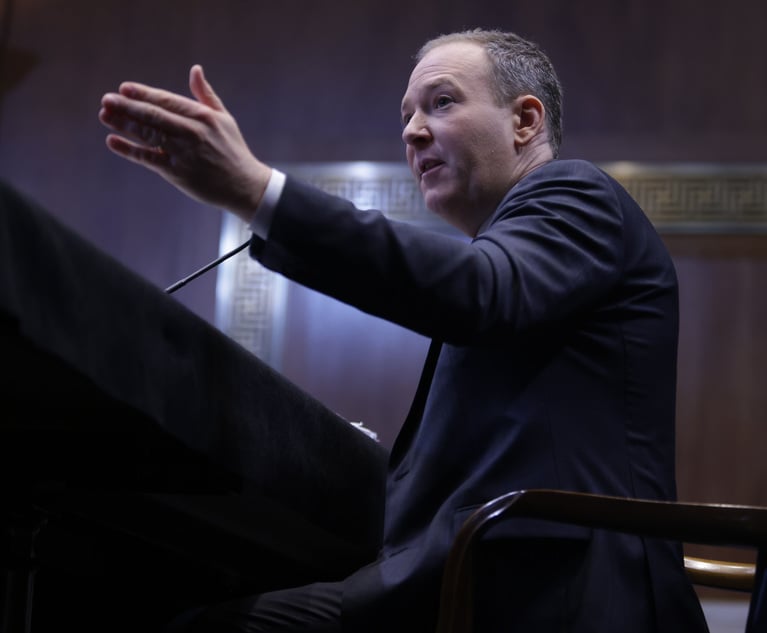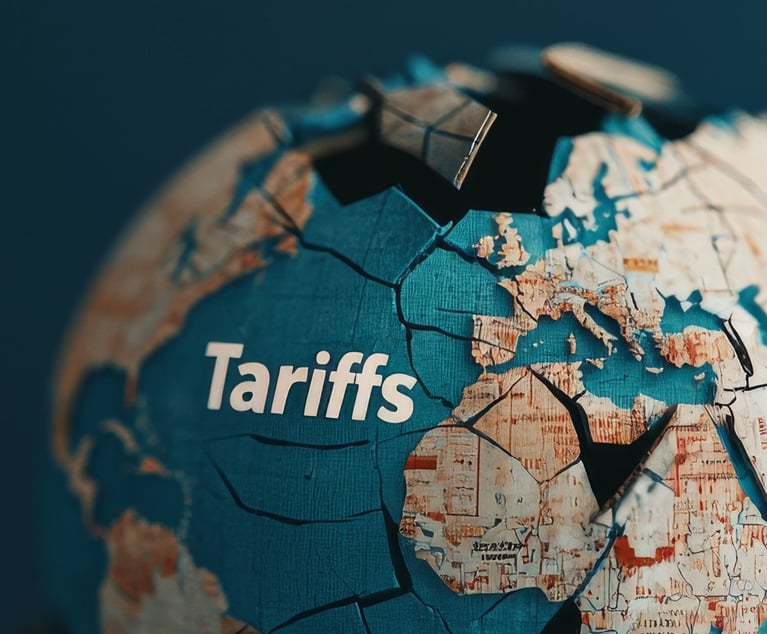Two Major Changes to NY Environmental Law Generate Litigation and Uncertainty
Recent court decisions suggest that the 2019 Climate Leadership and Community Protection Act (CLCPA) and 2021 Environmental Rights Amendment (amendment) are going to have very significant impacts on environmental regulation and litigation in New York state.
February 27, 2023 at 11:00 AM
8 minute read

Recent court decisions suggest that the 2019 Climate Leadership and Community Protection Act (CLCPA) and 2021 Environmental Rights Amendment (amendment) are going to have very significant impacts on environmental regulation and litigation in New York state. Through CLCPA, the state legislature mandated the near total elimination of greenhouse gas emissions from New York's economy by 2050. Buried in the law is Section 7(2), which requires all New York state agencies to consider consistency with CLCPA's greenhouse gas mandates when issuing discretionary approvals. Read broadly, state agencies cannot issue permits, licenses, funding awards or other approvals without a finding that either the activity will not interfere with achieving CLCPA's emissions limits or that any interference is justified, and mitigated as much as possible. As the New York State Department of Environmental Conservation (DEC) and other agencies wield this new authority, the resulting agency decisions are likely to elicit much litigation.
The amendment is even broader. It adds to Article I of the New York Constitution a right to a clean environment for citizens, enforceable against all levels of state and local government. DEC has, at least in defending against one lawsuit, resisted a broad interpretation of the amendment. While the full implications of CLCPA and the amendment will not be known for years, recent litigation and agency decision-making shed light on how they have already reshaped New York's legal landscape. And both laws are clearly headed to the court of appeals for interpretation.
This content has been archived. It is available through our partners, LexisNexis® and Bloomberg Law.
To view this content, please continue to their sites.
Not a Lexis Subscriber?
Subscribe Now
Not a Bloomberg Law Subscriber?
Subscribe Now
NOT FOR REPRINT
© 2025 ALM Global, LLC, All Rights Reserved. Request academic re-use from www.copyright.com. All other uses, submit a request to [email protected]. For more information visit Asset & Logo Licensing.
You Might Like
View All
Neighboring States Have Either Passed or Proposed Climate Superfund Laws—Is Pennsylvania Next?
7 minute read
EPA Nominee Zeldin Says Climate Change Is Real, Agency Shouldn't Suffocate Economy

'Headaches,' Opportunities Ahead for Lawyers Advising Foreign Businesses, Attorneys Say
4 minute readLaw Firms Mentioned
Trending Stories
Who Got The Work
J. Brugh Lower of Gibbons has entered an appearance for industrial equipment supplier Devco Corporation in a pending trademark infringement lawsuit. The suit, accusing the defendant of selling knock-off Graco products, was filed Dec. 18 in New Jersey District Court by Rivkin Radler on behalf of Graco Inc. and Graco Minnesota. The case, assigned to U.S. District Judge Zahid N. Quraishi, is 3:24-cv-11294, Graco Inc. et al v. Devco Corporation.
Who Got The Work
Rebecca Maller-Stein and Kent A. Yalowitz of Arnold & Porter Kaye Scholer have entered their appearances for Hanaco Venture Capital and its executives, Lior Prosor and David Frankel, in a pending securities lawsuit. The action, filed on Dec. 24 in New York Southern District Court by Zell, Aron & Co. on behalf of Goldeneye Advisors, accuses the defendants of negligently and fraudulently managing the plaintiff's $1 million investment. The case, assigned to U.S. District Judge Vernon S. Broderick, is 1:24-cv-09918, Goldeneye Advisors, LLC v. Hanaco Venture Capital, Ltd. et al.
Who Got The Work
Attorneys from A&O Shearman has stepped in as defense counsel for Toronto-Dominion Bank and other defendants in a pending securities class action. The suit, filed Dec. 11 in New York Southern District Court by Bleichmar Fonti & Auld, accuses the defendants of concealing the bank's 'pervasive' deficiencies in regards to its compliance with the Bank Secrecy Act and the quality of its anti-money laundering controls. The case, assigned to U.S. District Judge Arun Subramanian, is 1:24-cv-09445, Gonzalez v. The Toronto-Dominion Bank et al.
Who Got The Work
Crown Castle International, a Pennsylvania company providing shared communications infrastructure, has turned to Luke D. Wolf of Gordon Rees Scully Mansukhani to fend off a pending breach-of-contract lawsuit. The court action, filed Nov. 25 in Michigan Eastern District Court by Hooper Hathaway PC on behalf of The Town Residences LLC, accuses Crown Castle of failing to transfer approximately $30,000 in utility payments from T-Mobile in breach of a roof-top lease and assignment agreement. The case, assigned to U.S. District Judge Susan K. Declercq, is 2:24-cv-13131, The Town Residences LLC v. T-Mobile US, Inc. et al.
Who Got The Work
Wilfred P. Coronato and Daniel M. Schwartz of McCarter & English have stepped in as defense counsel to Electrolux Home Products Inc. in a pending product liability lawsuit. The court action, filed Nov. 26 in New York Eastern District Court by Poulos Lopiccolo PC and Nagel Rice LLP on behalf of David Stern, alleges that the defendant's refrigerators’ drawers and shelving repeatedly break and fall apart within months after purchase. The case, assigned to U.S. District Judge Joan M. Azrack, is 2:24-cv-08204, Stern v. Electrolux Home Products, Inc.
Featured Firms
Law Offices of Gary Martin Hays & Associates, P.C.
(470) 294-1674
Law Offices of Mark E. Salomone
(857) 444-6468
Smith & Hassler
(713) 739-1250







